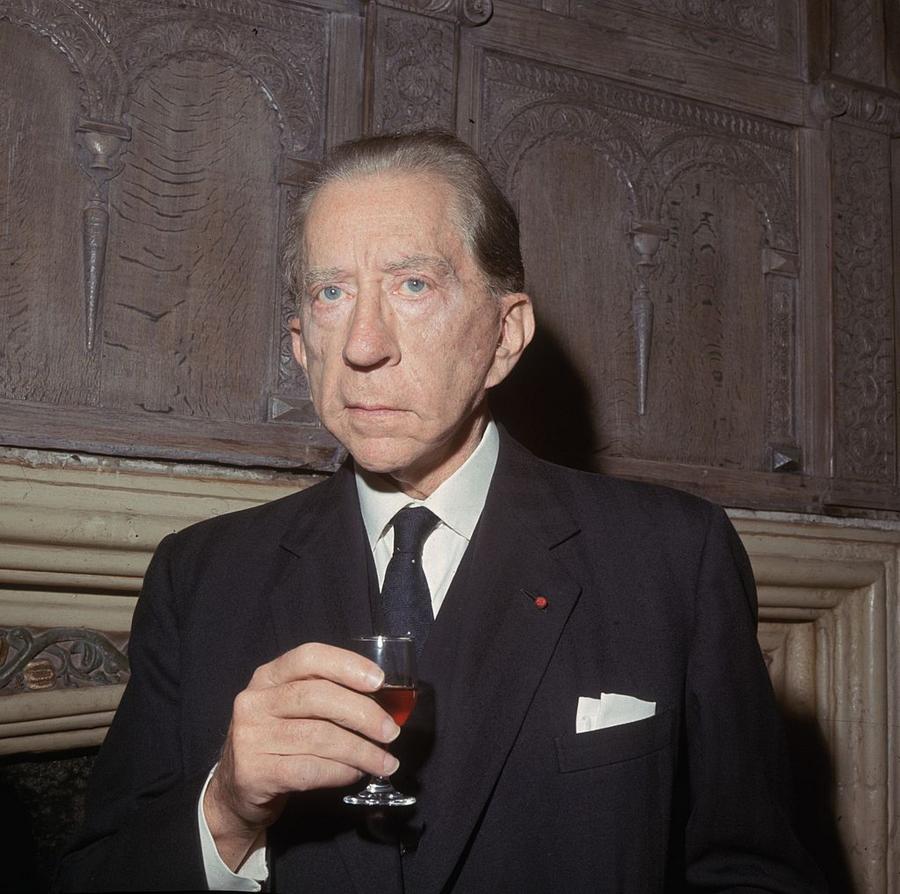At the time of his death in 1976, Jean Paul Getty was worth $2 billion. After adjusting for inflation, that’s equal to $8.3 billion in today’s money. That fortune made him the richest person in the world, a title he held for over three decades. He was the third human in history to amass more than $1 billion in non-inflation-adjusted wealth. The first two billionaires were John D. Rockefeller and Henry Ford.
Other than his enormous fortune, today, J. Paul is known for the museums and renowned art collections that carry his name. He is also legendary for being incredibly cheap. So cheap that he famously refused to pay his grandson’s kidnap ransom because he thought that would inspire more kidnappings of his other grandchildren. Whatever people thought of J. Paul Getty during and after his life, it cannot be overlooked that he is one of the great businessmen of the last 100 years. A businessman who also left the world with some amazing quotes on the pursuit of wealth that any Celebrity Net Worth fan would appreciate: “Formula for success: rise early, work hard, strike oil.” – J. Paul Getty
How did J. Paul Getty earn his enormous fortune? In 1949, he bought the oil exploration rights for a sleepy, impoverished, barren desert underneath a country called… Saudi Arabia.
Before you read any further, if you love reading stories about extremely rich people and how they earned their massive fortunes, please subscribe to our newsletter, Deep Pockets! Once a week, we tell a story you’ve probably never heard about a massive fortune being made (or lost). Subscribe by clicking this link or by entering your email in the form below:
Like Father, Like Son
Unlike John D. Rockefeller, who was born in wretched poverty, J. Paul Getty was a rich kid. His father, George Franklin Getty, got into the oil industry in 1903. In 1904, the family moved to Oklahoma. In 1905, they moved again, this time to Los Angeles.
In the summers between his school years, J. Paul worked his father’s oil fields in Oklahoma. By the time he was 22 years old he was brokering oil leases on his father’s behalf. The younger Getty soon set up his own oil company in Tulsa, and by June 1916, the 24-year-old had made his first million.
In 1917, after putting aside a nice little fortune, he announced with great fanfare that he was retiring to become a Los Angeles-based playboy.
When his father died in 1930, he was worth $10 million (roughly $200 million today). Half went to taxes. J. Paul was shocked when, out of the remaining $2.5 million, he was only given $500,000. The rest went to his mother, Sarah.
Suing His Mother
J. Paul didn’t think $500k would be enough to build his own empire as the head of the family business. So, he actually sued his own mother for a larger share of his father’s estate. To settle the issue, Sarah finally relented and sold her stake in the family business to her own son for an IOU payment of $4.5 million. As insurance, Sarah put the funds into a trust called the Sarah Getty Trust. Her trust would be the actual owner of her share of her husband’s former business, which would be controlled by her son. Spoiler: When Texaco acquired Getty Oil in 1984, the Sarah Getty Trust received $4 billion.
With his financing secured, J. Paul immediately set out to restructure and expand the family oil business into one that was fully self-sufficient. He began acquiring oil companies with the goal of controlling 360 degrees of his operations, from drilling to refining, transporting, and selling.

Hulton Archive/Getty Images
A Huge Risk
Today, when most of us think of massive quantities of underground oil, we probably picture places in the Middle Eastern like Saudi Arabia, Iran, Kuwait, or the United Arab Emirates. However, back in the 1930s and 1940s, oil really hadn’t been found in significant quantities outside of the United States.
In 1949, Getty made an investment that most people thought was certifiably insane. He took $9.5 million (roughly $125 million today) and purchased a 60-year exclusive lease to search for oil in a barren Middle Eastern desert no man’s land located under… Saudi Arabia.
The concession was only available because every other major oil company had done some surface testing and concluded the area had no significant deposits of oil. Spoiler: As it turned out, nearly 300 billion barrels of oil would eventually be pumped out of Saudi Arabia alone.
A Huge Payoff
In 1953, his gamble paid off ENORMOUSLY. Fortune Magazine described his discovery as “somewhere between colossal and history-making.“
Within a few years, his little tract of worthless land was producing 16 million barrels of oil annually. The discovery completely transformed the entire Middle East for the rest of history.
By the early 1950s, Getty owned Skelly Oil, Tidewater Oil, and Mission Corporation. In 1967, he merged all three companies to form the Getty Oil Company. According to a financial report at the time, the newly combined conglomerate controlled $3 billion worth of assets.
World’s Richest Person
In 1957, Fortune Magazine crowned J. Paul Getty the world’s richest person with a net worth at that time estimated at $700 million – $1 billion. When Getty was asked how much cash he would actually be able to generate if he liquidated his empire of oil, real estate, art, and other holdings, he replied:
“I would hope to realize several billions. But, remember, a billion dollars isn’t worth what it used to be.” – J. Paul Getty.
But of course, Getty didn’t sell off his concerns, and nearly a decade later, when his fortune had increased greatly. From 1959 on, Getty lived primarily in England. He bought the 400-year-old Sutton Place in 1959 as it was convenient for his Middle Eastern oil concerns and, at $840,000, it was cheaper than living in a hotel long term.
In 1984, eight years after his death, Texaco acquired his Getty Oil empire for $10 billion. As we stated previously, his late mother’s Trust was worth $4 billion in the sale.
Personal Life
On the personal front, J. Paul Getty was married and divorced five times. His first marriage was to Jeannette Dumont in 1923 and resulted in his first child, George Franklin Getty II. In 1925, he married Allene Ashby. In 1928, he tied the knot with Adolphine Helme, and his son Jean Ronald was born. In 1932, he married actress Ann Rork. The couple had two sons – Eugene (Jean) Paul and Gordon Peter. Getty’s fifth wife was singer Louise Lynch. They married in 1930 and had one son, Timothy, who died at the age of 12. Getty and Lynch divorced in 1958.
“I hate to be a failure. I hate and regret the failure of my marriages. I would gladly give all my millions for just one lasting marital success.” – J. Paul Getty
Art Collection
Getty, of course, was a renowned art collector who took such joy in his hobby that he wrote two books about it. The first, in 1949, was “Europe in the Eighteenth Century,” and that was followed by 1965′ “The Joys of Collecting.” After he purchased Sutton Place, he moved part of his art collection to the property. Worth more than $4 million, the collection included works by Tintoretto, Titian, Gainsborough, Romney, Rubens, Renoir, Degas, and Monet. The rest of his collection resided in a gallery of his ranch home in Malibu.
Getty’s collection contained more than 600 items. He started collecting art in the 1930s. He bought the Malibu house and 60-acre ranch in 1943 and later added a wing for his art gallery. At that time, he placed the estate under a trust fund as the J. Paul Getty Museum, which was opened to the public in 1954. Some art objects were given to the Los Angeles County Museum, including Rembrandt’s “Martin Looter.” Additional art acquisitions after 1973 were placed in a Roman villa-style museum on Getty’s Malibu property, which cost $17 million to construct.
Getty is said to have received 3,000 letters a month from strangers seeking money. In a magazine article called “It’s Tough to Be a Billionaire,” Getty said:
“I never give money to individuals. It’s unrewarding and wrong.“
When it came to his wealth, suffice it to say that were Getty alive today, he would not be a part of Bill Gates and Warren Buffett’s Giving Pledge. In a 1965 “Saturday Evening Post” article called “The World is Mean to Millionaires,” Getty said:
“If I were convinced that by giving away my fortune, I could make a real contribution toward solving the problems of world poverty, I’d give away 99.5 percent of all I have immediately. But a hard-eyed appraisal of the situation convinces me this is not the case. However admirable the work of the best charitable foundation, it would accustom people to the passive acceptance of money.”
The fact is, Getty was at times proud of his own entrepreneurial genius while simultaneously boasting over his penny-pinching ways. For instance, the most talked about feature of his Sutton Place mansion was the telephone booth Getty had installed so that staff and guests did not have to feel they were imposing on their host when they needed to use the telephone. He was legendarily thrifty – even going so far as to wash his own socks so as not to have to employ someone to do that for him nor have to own more socks than he absolutely needed.
It was this measure of frugalness that was employed in the 1973 kidnapping of his grandson, J. Paul Getty III, in Italy. Getty was asked to pay a $16 million ransom. He refused, saying:
“I have 14 other grandchildren, and if I pay one penny now, then I’ll have 14 kidnapped grandchildren.”
J. Paul Getty died of heart failure on June 6, 1976, at the age of 83. He was at his mansion in Surrey, England at the time. Upon his death, Getty bequeathed $1.2 billion to his charitable trust, the Getty Foundation, to be used toward the endowment of the arts. Getty had been reclusive in his later years. Reportedly he talked about wanting to return home to Southern California many times, but he never did.
Getty was survived by three sons, J. Ronald Getty, J. Paul Getty Jr., and Gordon Peter Getty, 16 grandchildren and one great-grandchild.
